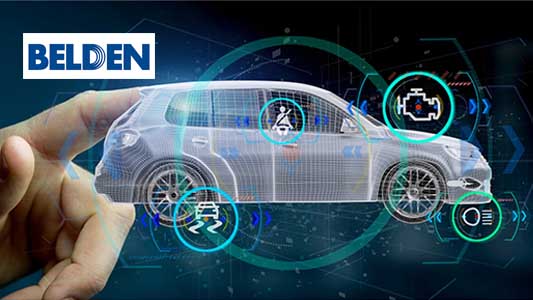As the automotive industry continues its digital transformation on the move toward Industry 4.0, more data is being generated about workflows, machine health and production time than ever before.
To help team members at all levels use this information to eliminate bottlenecks, track and reduce downtime, improve efficiency and support predictive maintenance, automotive plant networks are transmitting ever-increasing amounts of information between previously disconnected layers of the business.
In traditional network environments, traffic moves through automotive plants from machine to machine to coordinate efforts. More integrated systems allow for data to flow from machine to operational systems to enable remote monitoring and control. Today’s advanced systems extend that even further by enabling data to flow from machines to business systems with more compute power to mine the data for trends.
These data-driven insights are powered by analytical engines hosted within server racks in a distant, centralized data center environment that handles all requests to receive, change, add or delete data. The traffic coming from end devices must be funneled from wherever it is on the network back to that central location.
As more data is produced, this centralized approach increases bandwidth utilization across the network and creates heavy traffic loads as the packets move from system to system. This can create bandwidth limitations, latency issues and unpredictable network disruptions that impact productivity.
To overcome these performance challenges, industrial edge computing is moving to the factory floor. By decentralizing and distributing compute infrastructure, industrial edge computing allows data to be processed right where it’s generated instead of traveling to a centralized location first. This gives faster access to real-time business insights and predictions that enable informed decision-making.
Industrial edge computing doesn’t take the place of centralized data centers, which handle work like batch analysis, big data, data warehousing and disaster recovery. Instead, it occurs between in-field and IoT devices and the cloud or centralized data center to handle real-time data processing and analysis. This low-latency communication with smart devices reduces back-and-forth traffic flow and increases the speed at which teams can react to issues and opportunities. Data is sent to a larger, centralized data center only when needed.
Securing Industrial Edge Computing
When any new device or system is brought to the factory floor, new potential risks are brought with them. Edge compute appliances are no different. This means that it is important to select devices that are inherently secured from the start. The operating system for example needs to balance interoperability with security; operational flexibility with patch management.
When deployed correctly, industrial edge computing can help automotive plants enhance their cybersecurity posture as well. They can reduce cybersecurity risks by minimizing the need for live operational data to be drawn from the centralized servers that are often targets for cyberattacks. Should a bad actor be able to compromise an edge device, these devices tend to store only limited and partial data sets.
The industrial edge is also a great place to deploy a combination of traditional cybersecurity tools. Historically, network infrastructure devices have been used to mirror traffic to threat detection software at the expense of duplicated network volume. Edge compute platforms can run containerized versions of these tools, deploying them as sensors within a network. This distributes the load and can provide visibility into corners of the network that otherwise would have been dark
Docker containers or virtual machines also improve a cybersecurity posture by reducing the volume of data transmitted across the network. The reduction prevents other issues from being obscured.
A fully featured edge compute platform can also provide better access to devices and equipment. For example, Belden’s OpEdge-8D Gateway integrates secure remote access capability to make sure users and data are protected at the edge.
If you want to learn more about industrial edge computing on the automotive plant floor, or if you’re ready to find out how prepared and protected your plant is from cyberattacks, we have an entire team standing by to help. Reach out to our automotive experts @ India.Sales@Belden.com














